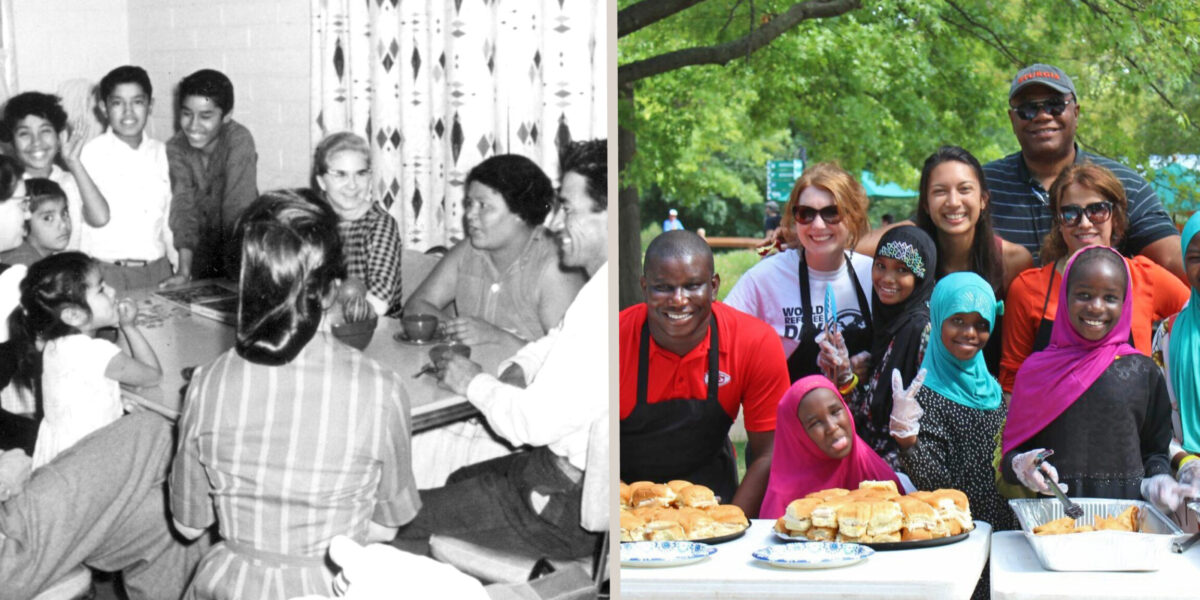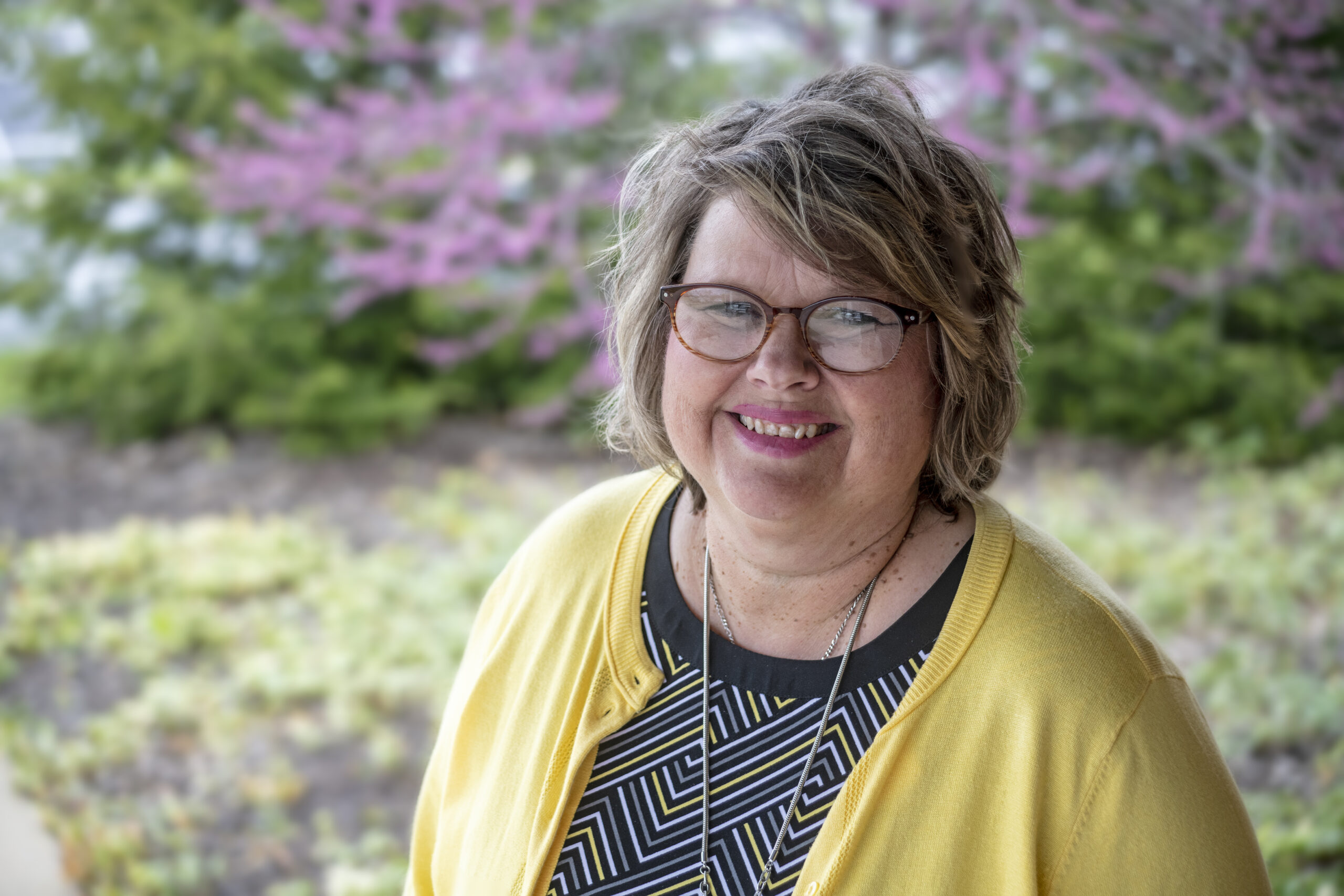Though they grew up in different eras, many young people in the past seven and a half decades have shared a similar dream: In a world of militarism, materialism and me-ism, they desired to seek a road less traveled. Instead of marching to the beat of the times, they wanted to follow Jesus into a pathway of service.
They found that alternate pilgrimage in Mennonite Voluntary Service (MVS). For 75 years, within varying denominational structures, MVS has provided more than 14,500 participants with opportunities to help heal a world ravaged by turmoil and pain.
In service terms generally lasting from one to three years, they worked with communities affected by broken systems, war, racism, poverty, social service cutbacks, abuse, human trafficking, and environmental damage. While serving at sites ranging from hospitals to community centers to nonprofit agencies, they have lived in communal housing and worshiped with local congregations
By following Jesus into service, their lives were changed as much, or more than, the lives of those they served. The sound and direction of their footsteps is best heard and seen in the stories they share.

Ronald Collins during his time in MVS in Puerto Rico.
Ronald Collins.
Technician, Mennonite recording studio, Aibonito, Puerto Rico, 1958–1960
Before I became a longtime Mennonite pastor and physics teacher, I fulfilled my draft requirement through a government-sanctioned option called 1-W that worked in conjunction with MVS in Puerto Rico. It’s where I served as a recording studio technician and met my future wife, Betty Jo Delagrange, who was serving in MVS as a registered nurse at a local hospital. We grew up in rural-oriented Mennonite congregations that had emphasized the importance of pacifism, and often hosted visiting missionaries. But viewing a slideshow in a church basement was altogether different from living in a foreign culture. At my home church, I received peace teaching, but 1-W gave me a way to live it out. It solidified my values, it gave me lifelong friendships, and it shaped my life choices.

Children playing at the Bethel Day Nursery in Chicago.
Kathyrn Aschliman
Child care center in Chicago, 1959–1962
My worldview as a Mennonite teenager in the early 1950s was jarred when I participated in a 1952 study tour to post-war Europe. There, I saw children playing in bomb craters. The ravages of war—still so stark after World War II—were a real eye-opener for me. That experience shook me up and later caused me to think about how I could use my elementary education degree to make the world a more loving, whole place.
After graduating from Goshen (Indiana) College with an elementary education degree in 1954, I taught school before serving with MVS at Bethel Day Nursery in inner-city Chicago from 1959–1962. MVS helped me take advantage of a new way to demonstrate my Anabaptist convictions along with my male counterparts. Many of them were conscientious objectors when the U.S. Selective Service designated MVS as a 1-W option. (A significant number of COs chose MVS until the draft ended in 1973.)
Near the end of my MVS term, Goshen College hired me as a teacher. For the next 34 years, I taught early childhood education and served as director/teacher of the Goshen College Laboratory Kindergarten. Even though I felt torn about whether to leave the city back in 1962, I realized that at Goshen, I could equip many students to go to all the Bethels around the globe.

Gilberto Perez in 1988.
Gilberto Perez
Assistant, health clinic lab,
San Antonio, Texas, 1988–1990
When I was 12, I hung out with the older guys who came from their Brownsville, Texas, MVS unit to help my parents, Elizabeth and Gilberto, build a Hispanic Mennonite church in Robstown. When I was 19, those memories emerged as a powerful symbol of what I could do with my own life—if I was willing to take the risk.
Because I had enjoyed relationships with those guys who stayed in our home and ate meals with us, I decided to try it for myself.
My exposure to people in the health clinic lab who needed health, food and treatment tapped me into the values of my parents. MVS led to my own purpose, passion and calling. As a result, I changed my major from music to social work, and served as a social worker before becoming a social work professor at Goshen College, where I am now dean of students.
Lizzy Diaz in 2014, on the steps of Menno House, the MVS unit in Manhattan, New York. She was MVS program director from May 2017 until May 2019.
Lizzy Diaz
Advocacy office worker, World Vision,
New York City, 2014–2015
MVS has solidified life direction and purpose for many participants, including myself. After graduating in sociology at Goshen College, I worked there for a year as a multicultural admissions counselor. I then pursued MVS, during which I volunteered in the advocacy office of World Vision in New York City. I had always dreamed of working at the United Nations one day, and I got the opportunity as I had to attend some sessions there for my volunteer role. After my term, I worked as a social worker in Harlem for a year before assuming my former post as MVS program director.
I believe that addressing today’s social issues, i.e., immigration, ecology, human trafficking, is a huge draw for today’s socially-minded young adults. Even though issues change, what doesn’t is the fact that MVS has always had a strong heartbeat for sharing God’s healing and hope. MVS has always had volunteers with a heart for caring in a broken world, and a lot of our placements throughout the years have involved partners who serve marginalized people. Those of us who have served were encouraged not to do so through a savior complex, but with servants’ hearts wherever we were placed.









